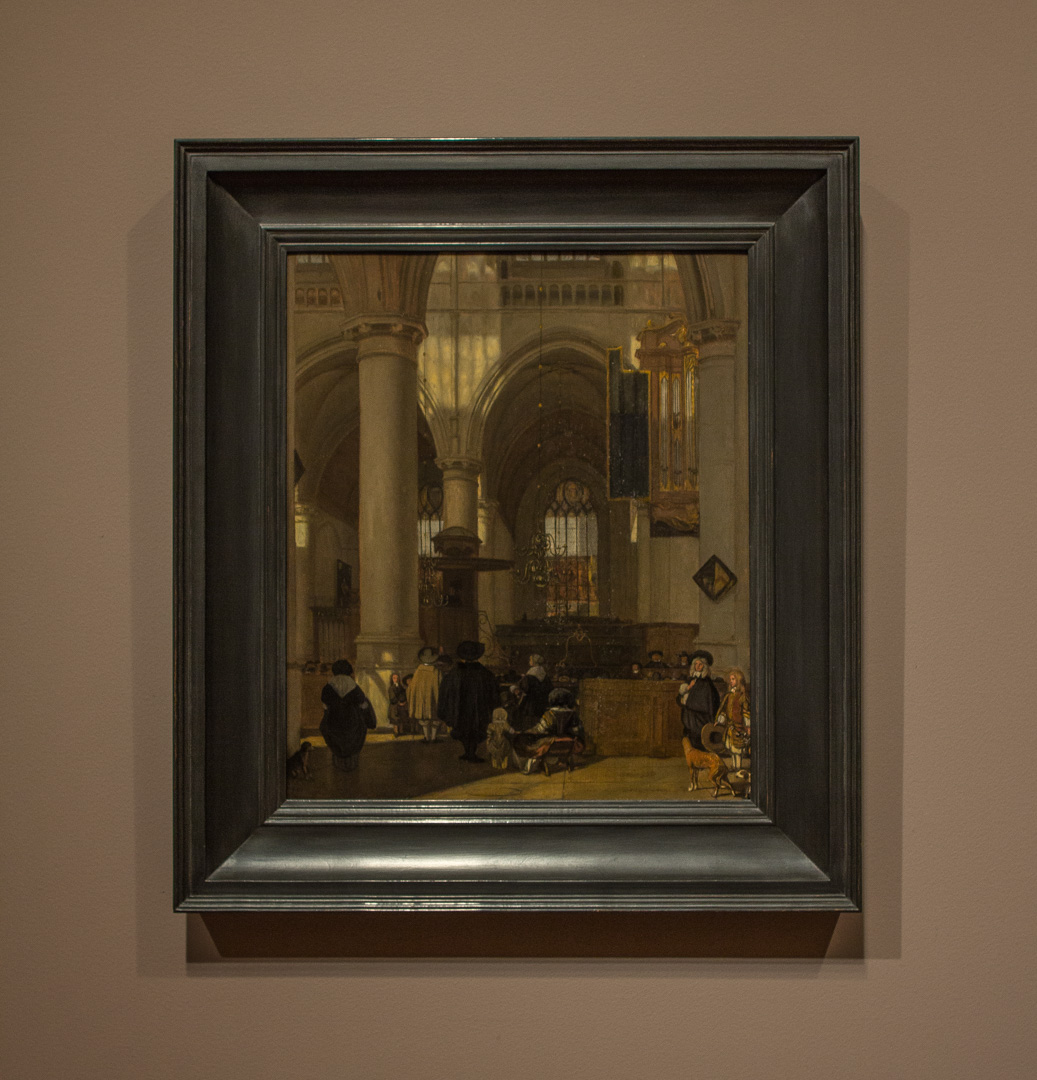Object of the Week: Church Interior

Emanuel de Witte earned recognition as one of the great architectural painters of the 17th century. The years of De Witte’s life and career encompass the height of the genre for which he is known: the church interior. In SAM’s Church Interior a mood, and a moment, unfolds. Gentle light falls over the scene, entering the church through the windows directly across from us, and from windows that we know are above and behind us. The details of the painting, especially the architectural decoration and the faces of the figures, reveal a soft and painterly touch. Had De Witte rendered the scene with hard lines and the crisp details of a hyper-realistic style, the impression created by the picture would be entirely different.
Scholarship and x-rays of the painting have revealed that the figure group at the lower right of Church Interior originally included a showy fifth figure. De Witte often repeated figures and figure groups in different paintings, as if building a visual library of motifs, and then selecting the best one for his needs in a particular painting. The figure group in SAM’s painting recurs in a De Witte painting of a Protestant Baroque Church in the collection of the Wallraf-Richartz Museum in Cologne, France—only in that picture, a well-heeled man of arms occupies the space in the foreground that is vacant in SAM’s painting. Originally De Witte placed this figure in SAM’s Church Interior too, painting over him at a later stage in the process, and opening up the scene by doing so.
Knowing that a large, eye-catching figure once occupied the open space in Church Interior has changed the way I look at the painting. De Witte’s choice to exclude the jaunty figure in SAM’s painting seems studied and very purposeful. The still and peaceful mood of the church is enhanced by the open space, and we, as the viewer, are invited into the picture, with a clear pathway for entering the moment. Here, the subtraction of one dominating detail creates equality among the other details of the painting. The eye dances across the picture, picking them out like notes on a musical score.
By leaving space in the foreground De Witte also opened up the possibility for a subtle, silent dialogue on which, as a dog lover, I’m especially keen. The furry friends at the lower left and lower right corners of the picture seem to be gazing across the scene at one another, uniting the scene in a charming, unconventional way. Elsewhere, glances among the figures, as well as the play of light and shadow, connect the scene through an artful arrangement of harmonious patterns and tones. De Witte leaves us with a poetic and unified picture.
—Jeffrey Carlson, SAM Collections Coordinator